Opinion
I’ve Been Reporting From the Front Lines of the Hong Kong Protests. Here’s What It Taught Me About the Power of Art
Art doesn't just exist inside the museum and gallery.
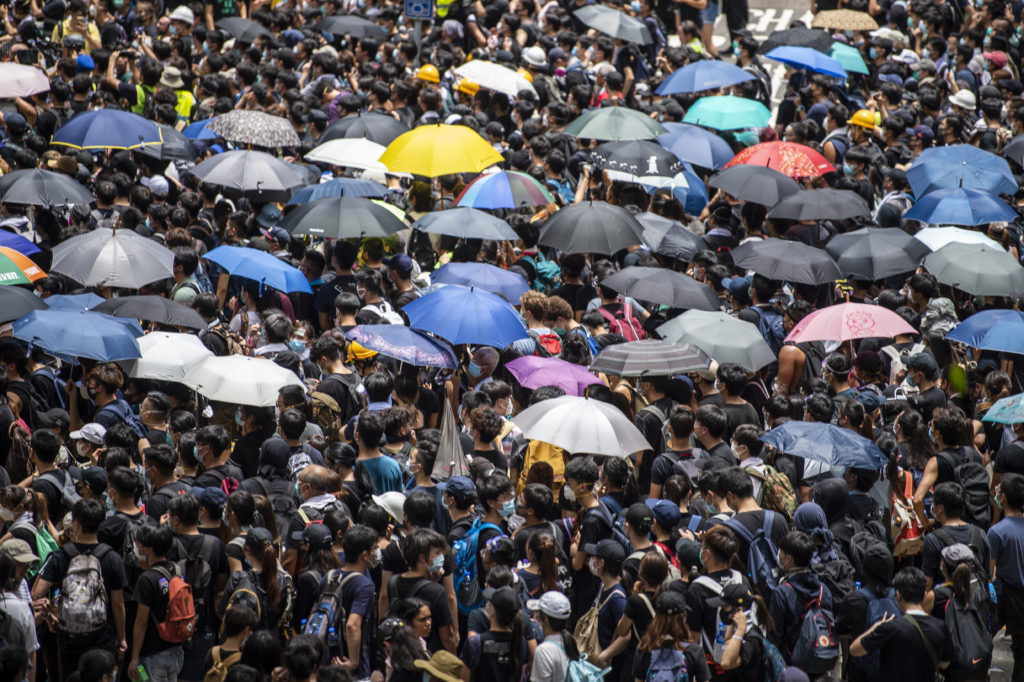
Art doesn't just exist inside the museum and gallery.

Vivienne Chow

Gas mask: check. Eye mask: check. Helmet: check. A press ID and reflective vest that spells out “PRESS” across the chest: check.
As I packed my black-and-white polka-dot designer backpack—the only backpack I own—earlier this month to prepare myself for the December 8 rally that marked the six-month anniversary of the Hong Kong protests, a feeling of uneasiness and doubt weighed heavy inside my chest. Since when did such protective gear become a must-have when I head out to cover a demonstration? And since when did writing about arts and culture involve putting myself on the front lines, where tear gas and rubber bullets face off against bricks and Molotov cocktails?
I might not have been able to imagine it six months ago, but this is now a somewhat regular day on assignment for me.
It didn’t have to be this way. As a journalist who covers art and culture, I have the option to look away. Footage depicting the violent clashes between the police and black-clad protesters may have been making international headlines over the past six months, but for Hong Kong’s art world, things seemed to be business as usual. I could have chosen to attend an art opening with a stylish clutch under my arm, sipping champagne while keeping my antenna up for news and gossip. The fall art auctions took place on schedule amid the shooting of tear gas, and I could have chosen to stay in the comfort of the auction room, taking in the frenetic bidding over the work of Yoshitomo Nara and Sanyu.
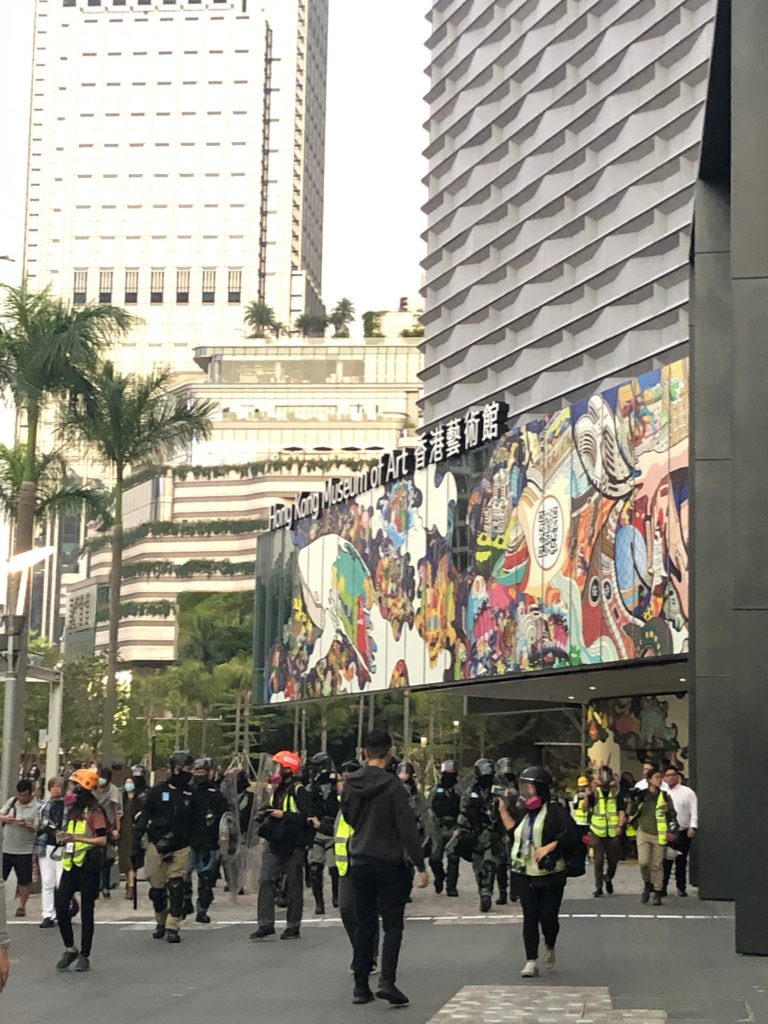
Riot police outside the Hong Kong Museum of Art after tear gas was fired nearby. Photo: Vivienne Chow.
But as Hong Kong descends into an unthinkable state, what seems to be the normality of the art world has suddenly become a detached reality might as well exist in a parallel universe. Protesters and unarmed civilians have been hit with more than 16,000 rounds of tear gas, nearly 14,000 rounds of so-called non-lethal weapons from rubber bullets to sponge grenades, and two live rounds. One student protester fell to death during a clash in a residential area, and more than 6,000 arrests have been made over the past six months, including of a child as young as 11. How can one still keep her head buried in the sand, thinking that the city is operating normally?
At the height of some of the most violent clashes, like the siege of university campuses in mid-November, Hong Kong was, quite literally, a war zone. None of this is normal. Had I chosen to stay in the art bubble and not witness at least some of what might be the worst events of terror my hometown has ever seen, I would have regretted it for the rest of my life—as a human being, a Hongkonger, and as a journalist.
Am I scared? I’m terrified. Covering art and culture has rarely involved encountering squads of armed riot police or hearing shots of tear gas fired at crowds in the heart of Central, the city’s core business district where international galleries like Gagosian, Lehmann Maupin, Simon Lee, and Pearl Lam are located. Nor does it typically involve getting jostled by crowds of protesters running across Salisbury Garden in Tsim Sha Tsui, where tear gas canisters were fired outside the newly reopened Hong Kong Museum of Art.
Sure, I had the experience of covering the Umbrella Movement on the frontline occasionally as a culture news reporter in 2014. I have also recently taken a safety workshop for journalists given by a former member of the Australian military. But this kind of reporting was never something I could get used to. And as news continues to surface about journalists becoming targets of riot police, many getting shot with rubber bullets or sponge grenades, and one even losing an eye, I have had to decide in a split second on the ground: should I stay or should I go? Should I continue to take pictures or filming?
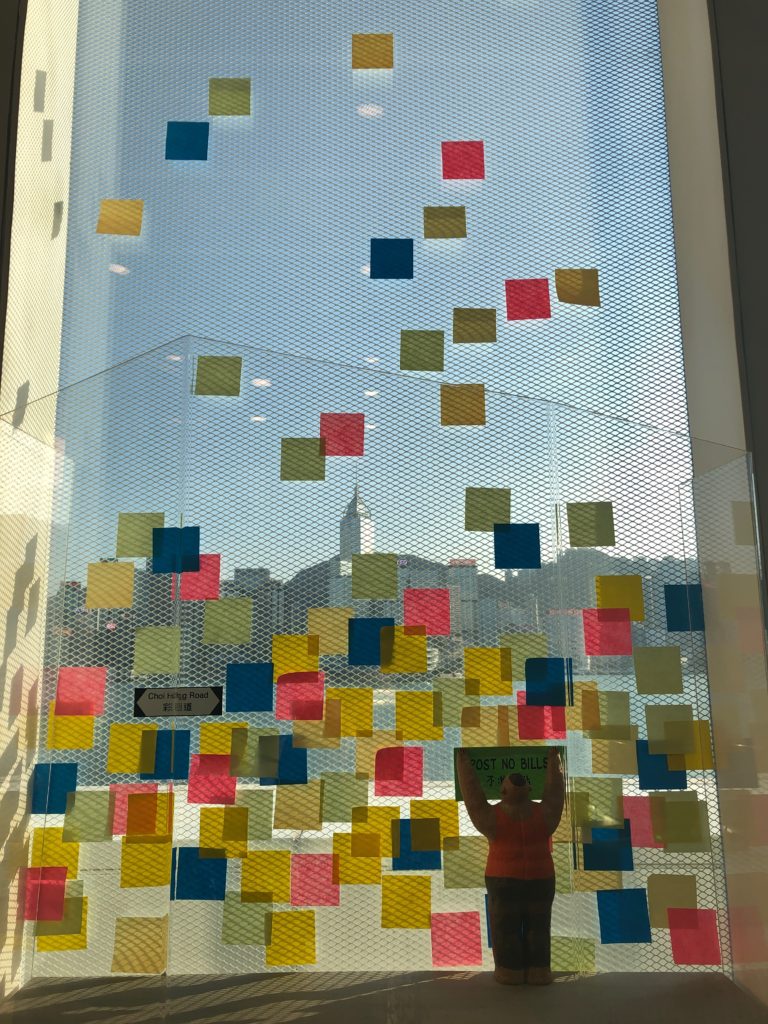
The installation Beyond by Hong Kong artist Rosanna Li Wei-han on show at Hong Kong Museum of Art. Photo: Vivienne Chow.
As an art journalist, it may seem unnecessary for me to put myself in danger like many of my colleagues who have been on the frontline on a day-to-day basis, and for whom I have the utmost respect. But these traumatic experiences have opened my eyes to humanity in a new and deeper way, which has inevitably informed the way I cover my own beat and helped me to reflect on the true meaning of art.
The words of Abby Chen, the head of contemporary art at the Asian Art Museum in San Francisco, constantly ring in my ears. During our conversation back in July, Chen told me that she believed the greatest art will be produced in Hong Kong in the wake of this uprising. “This is about being human, and the kind of resistance and resilience that we are seeing … Hong Kong artists are at the forefront in terms of thinking about their global identity in this rapidly shifting world,” she said. “Artists are part of this light.”
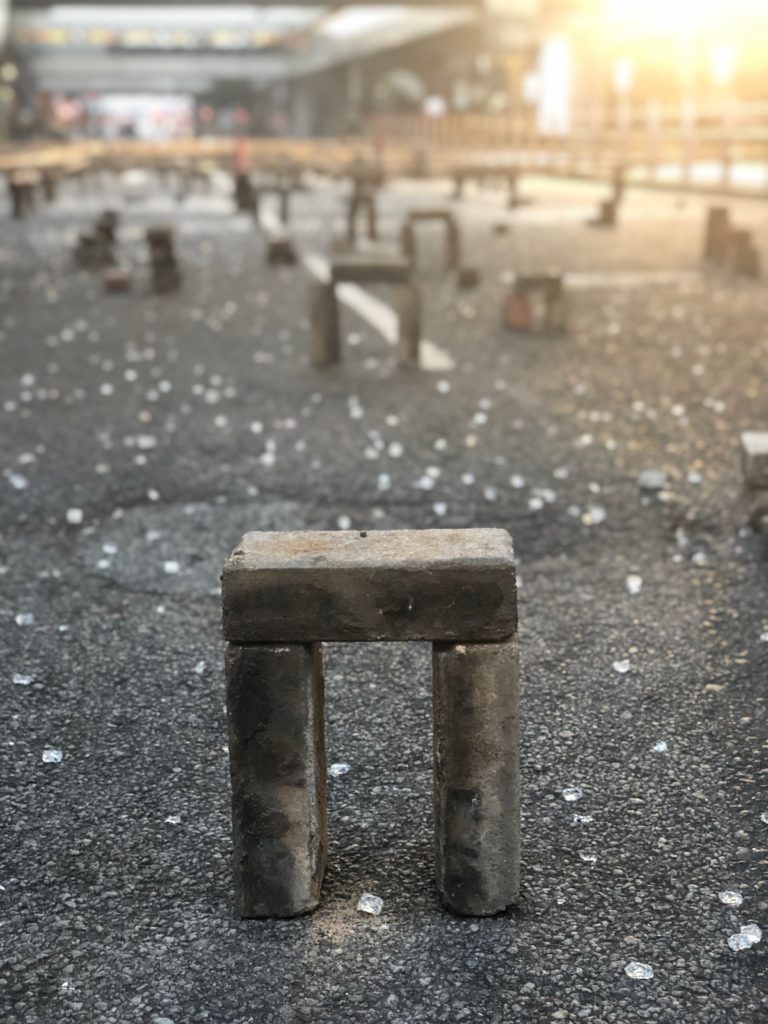
Protesters’ mini Stonehenge rockblock in Hong Kong. Photo: Vivienne Chow.
Five months later, Chen has been proven right. Her understanding of art, and more importantly, her understanding of humanity, has led me to realize that the most meaningful and relevant creative expressions are living on the streets, rather than inside perfect white cubes insulated from the real world.
Often made anonymously by groups of Hong Kong people who are determined to fight an impossible fight, these creative expressions—graffiti, songs, protest signs, memes, Stonehenge-looking roadblocks, and even performative protests—represent the demands, dreams, hopes, and fears of the people of this former British colony as they struggle to retain its freedoms and systems under the rule of the People’s Republic of China before the 50 years unchanged promise expires in 2047.
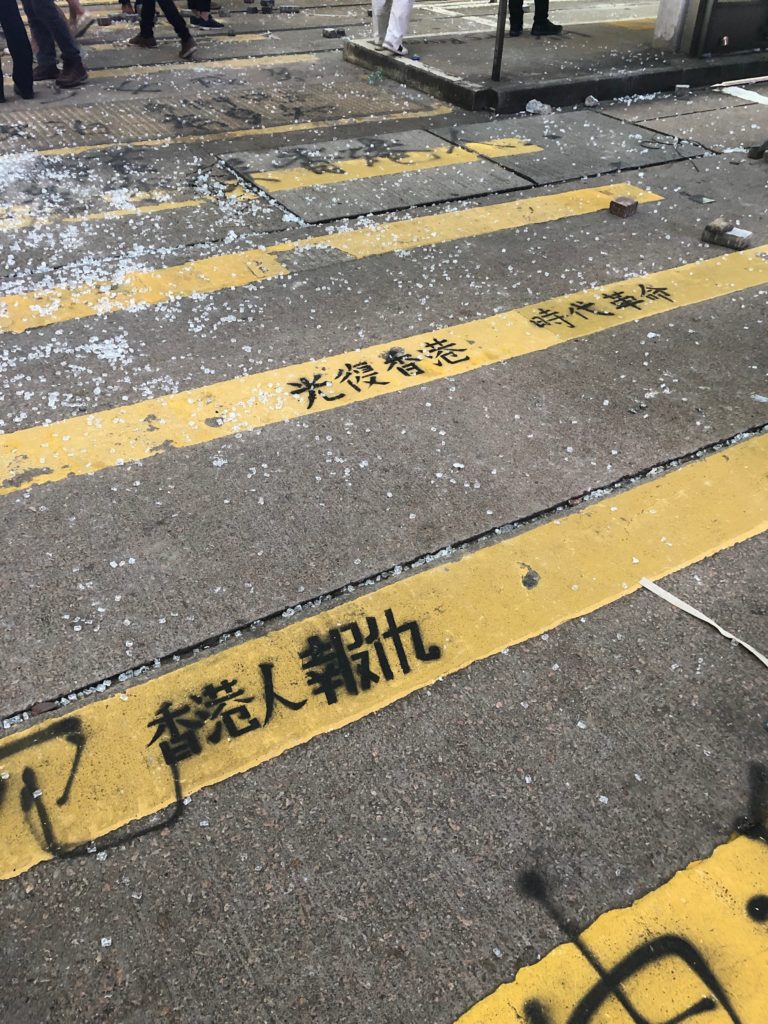
Graffiti that reads “Hongkongers, revenge.” Photo: Vivienne Chow.
The protests sparked by the now-withdrawn extradition bill have morphed into a much larger scale pro-democracy movement, and the symbolism has expanded, too. These creative outputs have not only transformed public spaces into a living gallery of visual culture, but have also played an important role in keeping the movement vital and engaging. It is no coincidence that a record number of artists ran for public office during the most recent Hong Kong elections—and won.
When I walk pass a Lennon Wall and look at the post-its, graffiti, and posters spelling out protest slogans such as “Liberate Hong Kong, Revolution of Our Times” or “Five Demands, Not One Less,” I often ask myself: Is it art? But what is art, anyway? A banana duck-taped on the wall sold for $120,000? Or an object of desire made with impeccable craftsmanship?
Art, to me, is an honest statement, and what I see in the streets and in images circulating in cyberspace are expressions that require both artistic skill—be it drawing, design, or street calligraphy—and sincerity. They are the product of hybrid cultural influences inherited from Chinese tradition, Japanese pop culture, the Western world, as well as Hong Kong’s cinema heritage, Canto-pop, street humor, and cynicism.
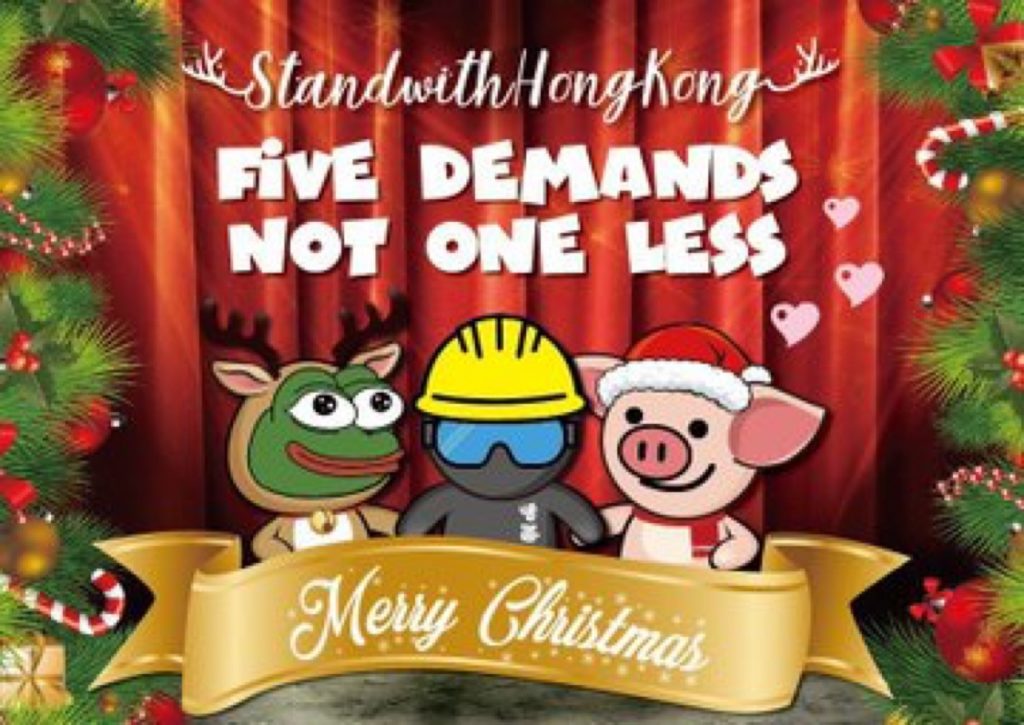
Christmas card from Hong Kong protesters.
These creative outputs embody a unique Hong Kong cultural identity, but can also resonate with a global audience. They borrow icons and memes from other cultures and reinvent a new identity for them, such as Pepe the Frog, which was reimagined as an irreverent symbol of Hong Kong’s resistance and resilience rather than the symbol of hate co-opted by the alt-right in the United States. And more importantly, these visual expressions are the vessels of the pain and trauma Hong Kong people have experienced over the past six months—people whose voices have been muted by a government that fails to respond to their demands. Some have resorted to violence out of desperation, but many have also turned to art and creativity as their weapon of choice. Their creations might not be perfect, but they are genuine. They are people’s art.
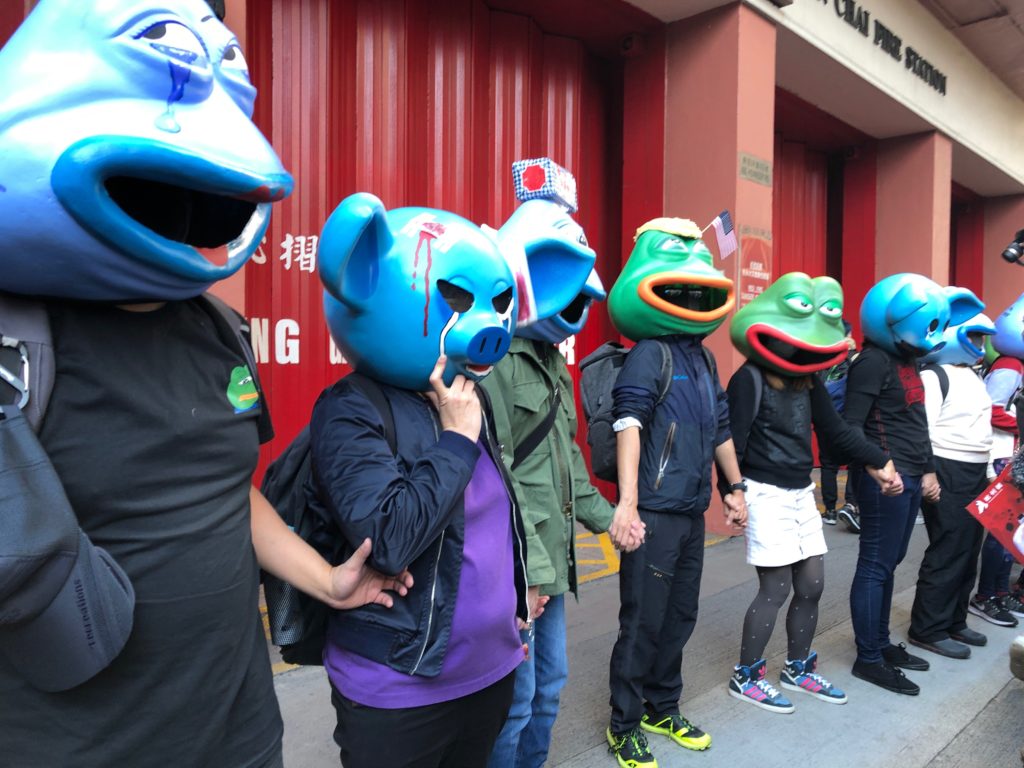
Protesters in fiberglass masks of Pepe the Frog and LIHKG Pig at the December 8 protest. Photo: Vivienne Chow.
What will be interesting to see next is how artists distill all this to express themselves with their own artistic language. Some have already begun, but there will be more to come in the next decade or so. And as the movement is still ongoing, so is the pain and trauma—but I have absolute faith in the future of Hong Kong art. That, now more than ever, is what makes this city one of the most interesting places to write about art.
The Pulitzer Prize-winning art critic Jerry Saltz began writing when he was over the age of 40. Being in such a rapidly changing Hong Kong at age 41, I feel that my career has only just begun. I am looking at the world around me, and at art, with fresh eyes.